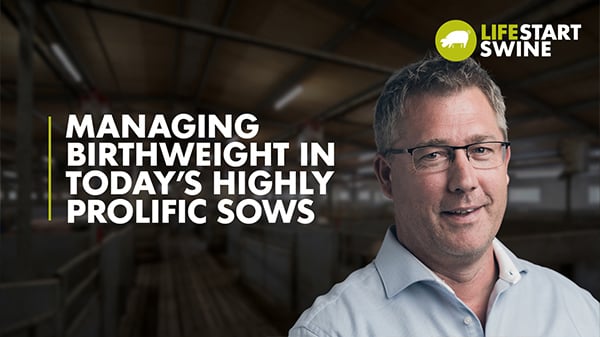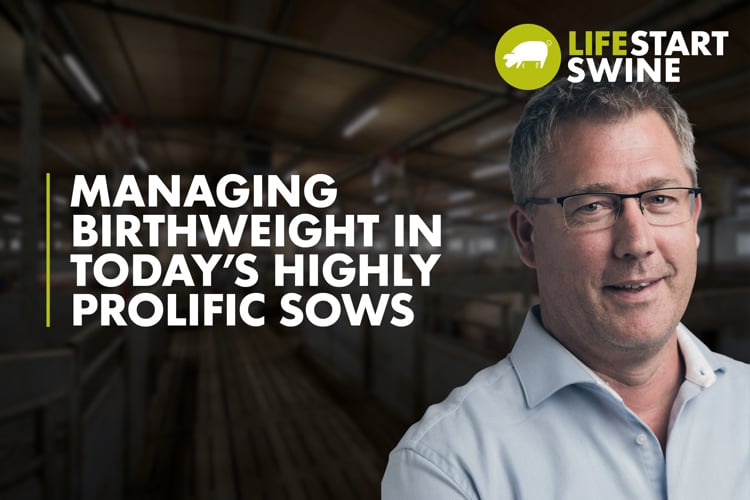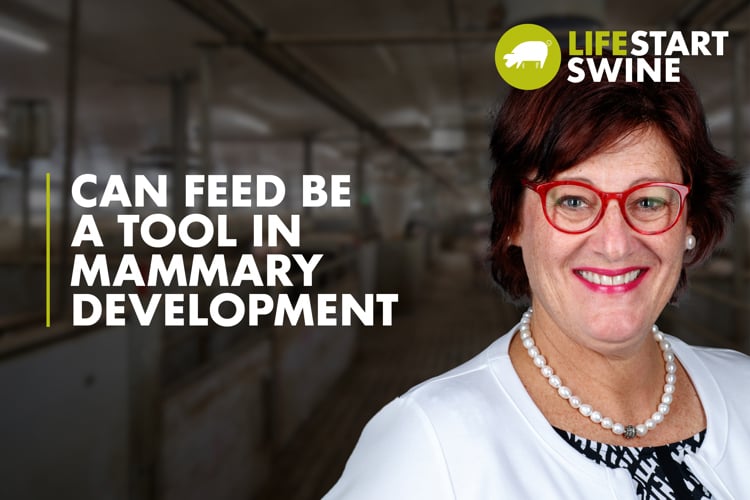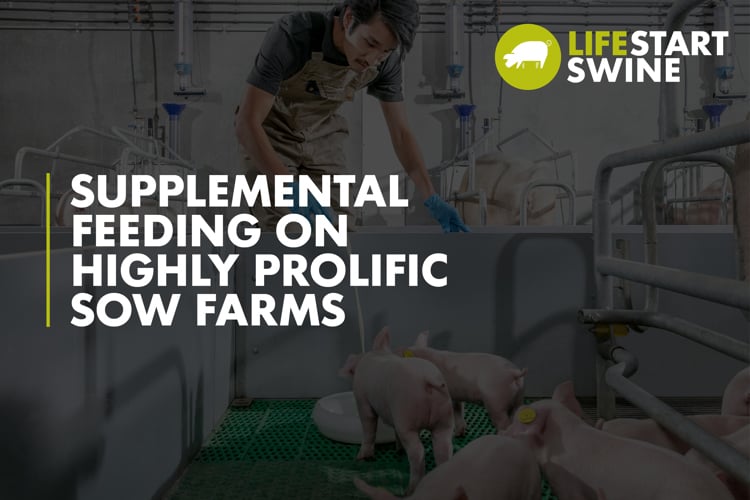
- 2023
- LACTATION
Pieter Langendijk, senior research scientist with Trouw Nutrition, speaks to LifeStart Swine about how producers can manage low piglet birth weights in today’s large litters. Langendijk has worked for Trouw Nutrition for seven years focusing on sow R&D, specifically looking at how nutrition can improve sow performance.

Low piglet birth weight in highly prolific sows is an ongoing global issue for pig producers. Why is birth weight so important to pig performance?
“Today, it's not uncommon to wean 30 piglets per sow per year. To do that, we need to wean around 13 piglets per litter. Generally, to wean 13 piglets in western Europe and North America, you would need the sow to give birth to about 16 piglets per litter. Out of those 16, you end up losing three up to the point of weaning,” said Dr. Langendijk.
Essentially, producers are losing 20% of their piglets to the point of weaning. About one-third will be lost at birth, and another two-thirds will be lost between farrowing and weaning. Those losses are related to birth weight, especially the early losses between farrowing and weaning.
“To demonstrate, piglets with a birth weight under 750 grams – 50% of those won't make it to weaning as they have a very high risk for mortality. Average birth weight is around 1.4 kg to 1.5 kg; those under 1 kg make up about 10% to 15% of your piglet population,” he said. “To compare, piglets that weigh more than 1 kg at birth will have only 5% risk of mortality between farrowing and weaning. So that’s a huge impact of birth weight on risk of mortality, and therefore the number of piglets that you are able to wean from a litter.”
How does large litter size affect birth weight
Uterine capacity is the key - sows can only accommodate a certain number of piglets, but it’s not fixed, it's flexible.
“If you put 12 embryos into a uterus, they will grow into fetuses, and you'll have maybe 10 piglets born so there'll be some lost along the way. If you put 20 embryos into a sow, we'll lose some embryos along the way similar to the 12 embryos, however the percentage loss will be higher, but the sow will end up carrying more piglets to birth,” he explained. “The uterus is flexible in that it can accommodate larger litters if needed, but at the same time, it cannot sustain the growth of all those fetuses. As a result, when you have a large litter, the average birth weight will be lower and piglets will be born smaller.”
There will simply be more piglets born with a birth weight below 1 kg, which is a critical threshold. This means producers will see a higher percentage of smaller piglets and more piglets at higher risk of mortality between farrowing and weaning.
Parity is another aspect to consider. Gilts tend to have smaller, less mature uteruses compared to older sows.
“Even if gilts carry the same size litter, gilts will give birth to smaller piglets than a mature sow with weight differences of about 100 grams,” he said. “If a gilt carries 15 piglets, they may average 1.3 kg, whereas if the sow would carry the same 15 piglets, they will average 1.4 kg.”
Opportunities to improve birth weight
Looking at nutritional concepts to improve birth weight, Dr. Langendijk said a lot of the research has focused on the last 30 days of gestation because that's the period when piglets really grow in utero and put on weight. Some research has tried to increase feed allowance for sows at this time to deliver more nutrients to the fetuses and increase birth weight.
“Most of the research has been disappointing because what normally happens is if you increase sow feed allowance, you'll see that the sow will put on more weight and maybe more backfat, rather than seeing an increase in piglet birth weight,” he explained. “The same is true for research that has focused on increasing vascularity of the placenta. There's been quite a bit of research with arginine, which is an amino acid that increases vascularity of the placenta throughout gestation. The goal is to increase delivery of nutrients and oxygen to the fetuses in the hope that you increase birth weight. Again, that research has been disappointing when it comes to birth weight.”
Langendijk has concluded that the last month of gestation is the wrong window to target, and more effort should be placed on the period when the placenta develops.
“We know that placenta size and placenta weight are associated with birth weight, so small piglets have small placentas, large piglets have large placentas,” he noted. “If we could manipulate placenta size, we could hopefully increase our birth weight as well. The placenta develops in the middle of gestation – between day 30 and 60 – that’s when we should develop nutritional concepts in gestation to improve placenta development, and by doing that, improve birth weight.”



